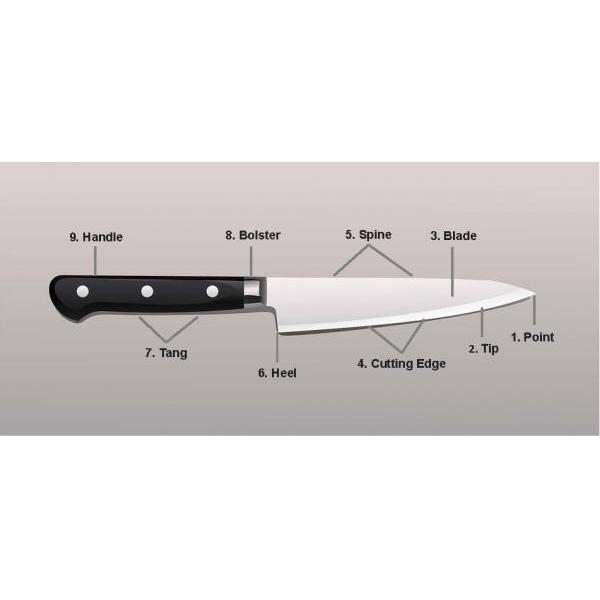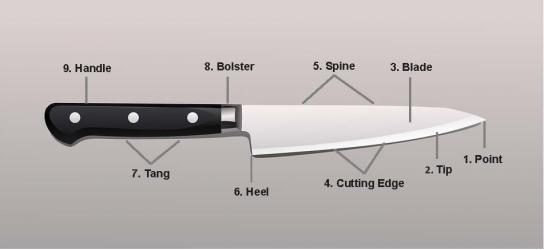Basic Guide to the Anatomy of a Kitchen Knife
Ever get confused on how to describe a part of a knife? Well, you come to the right place. Here we will show you the different parts that make up a knife:
1. Knife Point
This is the very tip of the blade, which is usually defined by a sharp angle. Its main function is for piercing into meat. This is an especially important feature in boning knife, where the knife must first pierce into the fish flesh, before horizontally dissecting the meat apart.
2. Knife Tip
While definitions vary from places to places, here we consider the knife tip as the first third of the blade.
3. Knife Blade
The Knife blade is certainly one of the most prominent feature of a knife. Its size and shape can vary widely depending on the knife type and its function. The blade edges can also be serrated, tapered, or granton etc. depending on your usage.
4. Knife Belly or Cutting Edge
This is most often defined as the middle part of the knife edge, where the blade is in contact with the food during cutting process. Because of constant wear and tear, this part of the knife would be prone to dull edge and will require sharpening on a regular basis.
5. Knife Spine
The spine is positioned at the opposite side of the cutting edge. The spine helps support the blade for ease of cutting.
6. Knife Heel
The knife heel is the part of the cutting edge that is closer to the handle. Because of the proximity to the chopping hand, more force could be used in this area for cutting through tough objects.
7. Knife Tang
Knife tang is the part that connects the blade with the handle. It can be fully inserted, or inserted halfway, depending on the knife handle and style. The tang is essential for balancing the knife while adding strength. For top quality knives, choose fully forged knives that are made from one single piece of stainless steel.
8. Knife Bolster
Bolster is the thick protruding part of steel that are situated between the blade and the handle. It serves dual purpose of adding weight balance and protecting the fingers from the blade during cutting.
9. Knife Handle
Last but not least, we have the handle where our hands hold on to the knife. It can be made from a variety of materials such as stainless steel, plastic or wood. The shapes can also come in a variety of forms for aesthetic or ergonomic purposes.



